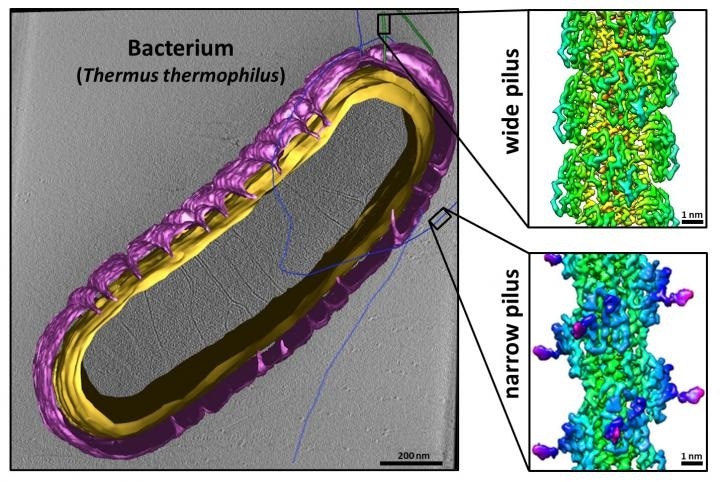Researchers have made a breakthrough interpretation of the way bacteria move and carry out the genetic exchange, that may possibly result in the development of novel antimicrobial drugs.

The new imaging method gives insights into how bacteria move and exchange genetic information. Image Credit: University of Exeter.
A research team from the Living Systems Institute at the University of Exeter and the University of Frankfurt has made an important finding around the structures of long filaments, that is, hair-like appendages, known as type IV pili present on the bacteria’s surface.
It is known that type IV pili play a crucial role in the proliferation of bacteria and the way they create biofilms, through adhesion, genetic exchange, movement, and interacting with other cells.
The genetic exchange takes place when cells accept the DNA, the molecule responsible for encoding the genetic code of an organism, from the environment.
DNA transfer plays an important role in the ability of the bacteria to become impervious to treatments. For instance, there are antibiotic-resistant genes that get shared and hence make the treatment ineffective.
In the latest study, researchers have identified that the bacterium Thermus thermophilus can create two types of type IV pili, one specialized for genetic exchange and one for movement.
The breakthrough study could allow researchers to target the two functions separately, for instance, by creating novel drugs that prevent the bacteria from moving or becoming impervious to antibiotics.
The research was published in the well-known journal Nature Communications, on Wednesday, May 6th, 2020.
It will now be important to investigate if this phenomenon is a universal principle occurring in other bacteria expressing type IV pili. This would pave the way for the development of antimicrobials aimed to target a particular mechanism.”
Dr Vicki Gold, Study Lead Author and Senior Lecturer, University of Exeter
Type IV pili are outgrowths that are present over the surface of a bacterial cell and are composed of several copies of a single protein.
In the latest study, the scientists employed cryo-electron microscopy to establish the structures of both forms of the type IV pili in unparalleled detail. The method enabled the scientists to collect a wide range of comprehensive images of the structures in varying orientations to produce an in-depth, 3D picture.
The finding that one of the pili is made up of an earlier undefined protein implies that researchers can target the various functions to find out what is essential for the proliferation and genetic exchange of the bacteria.
Consequently, the scientists were able to perform experiments to observe the efficient proliferation of the bacteria, or how well these microbes take up the DNA when a specific type of pilus formation is artificially obstructed.
It is going to be interesting to discover how exactly the two pili fulfill their different functions and how bacteria control their production. Knowledge of these mechanisms could lead to new strategies for combatting bacterial infection.”
Alexander Neuhaus, Study First Author, University of Exeter
Source:
Journal reference:
Neuhaus, A., et al. (2020) Cryo-electron microscopy reveals two distinct type IV pili assembled by the same bacterium. Nature Communications. doi.org/10.1038/s41467-020-15650-w.